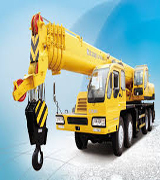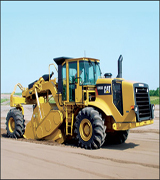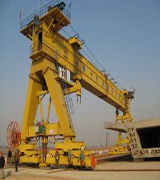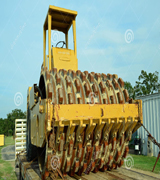
 |
 |
 |
 |
|---|---|---|---|
Echanized equipment designed to perform construction operations. Certain construction machines perform a series of operations insequence to achieve a final objective. Depending on their function, construction machinery can be classified into the following basic groups:excavating, roading, drilling, pile-driving, reinforcement, roofing, and finishing machinery, machinery for working with concrete, and machineryfor carrying out preparatory work. Preparatory work includes loosening the soil and clearing the area of undergrowth, trees, and rocks. It is performed by construction machinesmounted on crawler-tractor chassis, such as rippers, brush cutters, and stump pullers, which usually have interchangeable, mountedequipment suitable to the type of work being performed. In earthwork, the type of machinery used depends on the nature of the soil being worked and the type of work. The machines used includemechanical shovels and multibucket excavators, trench diggers, single-bucket loaders, and hydromechanization equipment (seeEXCAVATINGMACHINES). Vibration rollers and static road rollers with metal rolls and pneumatic tires are used to compact earth in embankments andmaterials in roadbeds. Excavating machines and machinery for carrying out preparatory work are used in road building. Specialized roading machinery is used toprepare beds and surfaces for roads and airfields. Track machines are used in railroad construction to lay rails and ties, fill in ballast, andstraighten track. Various types of drilling machines are used in operation when working rocky ground, extracting nonmetallic construction materials, earthboring, setting piles, and laying explosive charges (seeDRILLING). Pile-driving operations for the installation of footings and foundations are performed with pile-driving equipment, such as diesel hammers,steam hammers, and vibratory equipment. Construction pile drivers lift the piles and guide the pile-driving equipment during the operation. Concrete work is performed with special machinery. Batchers and concrete mixers prepare the concrete mix, vibrators compact the concrete, concrete pumps deliver the mix to the site, and concrete placers receive and distribute the mix. Roofing work is performed by roofing machines that clean, rewind, pay out, and paste rolled roofing material. Special, centrally located equipment supplies mastic to a roof after mixing and heating. Special equipment is used to remove ice deposits from roof substructures. In finishing work, machines are used for smoothing plaster, polishing mosaics, parquet, and paintwork, applying putty, and spraying paint. Other types of mechanical equipment are also used in construction work, including cranes, hoisting and conveying machines (chiefly for assembly operations), loaders and un loaders, conveyors, trucks, tractors, prime movers, trailers for transport operations, and various power tools. The principal trends in improving construction machinery include increasing the power-to-weight ratio and load-carrying capacity of individual machines, developing new types of interchangeable equipment, designing smaller machines (particularly for finishing operations), introduction power tools with a variety of interchangeable attachments, and designing machines based on unitized modular subassemblies and parts. The last trend develops all-purpose construction machines with sets of interchangeable equipment with increased reliability and longer service life. |
|||